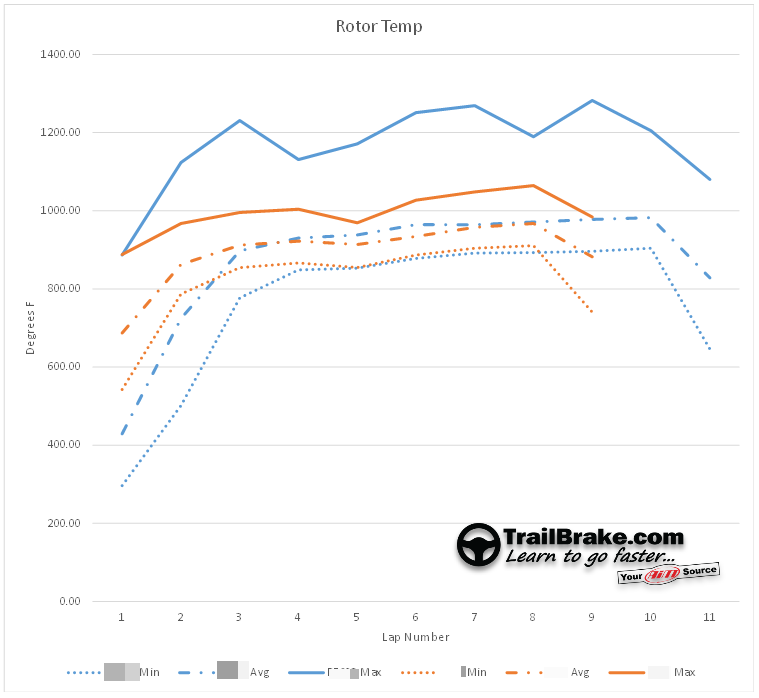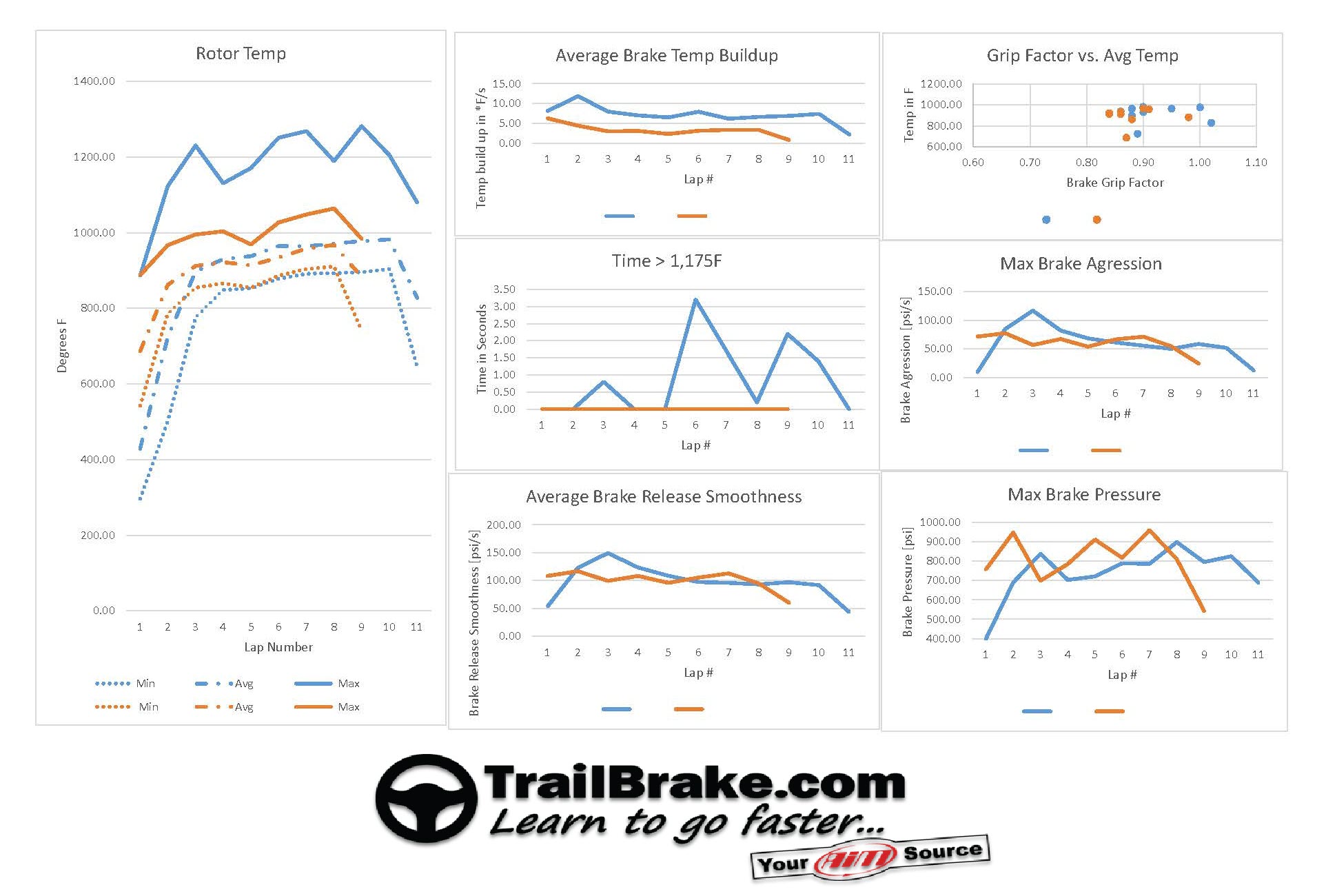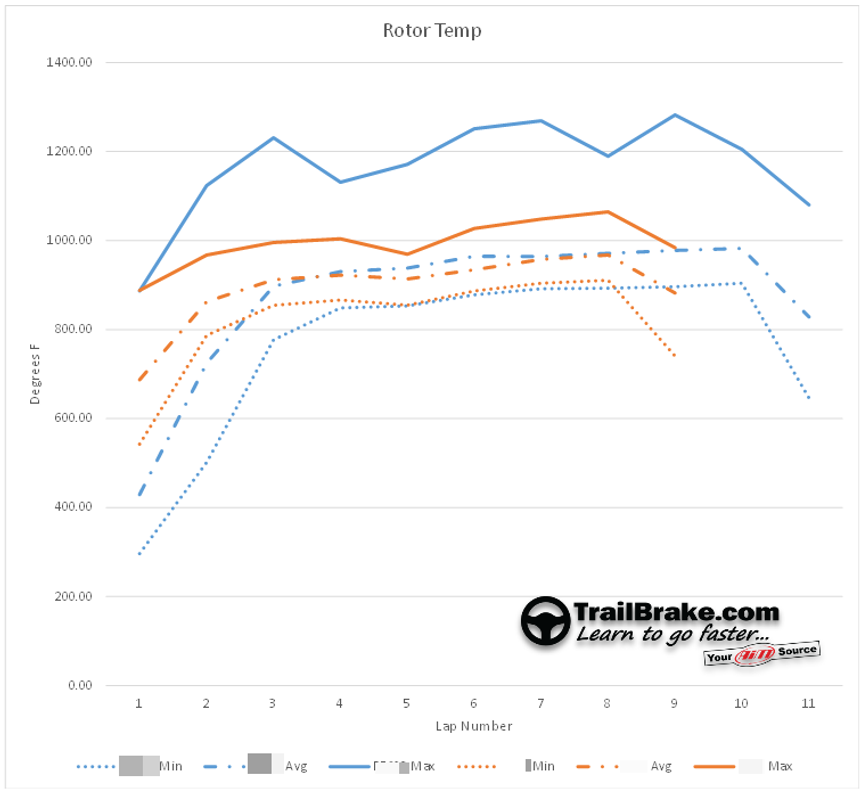Brake Pad Comparisons with DATA
If you are interested in the products used to do this type of brake comparison, check out:
There are many variables that go into selecting the right brake pads. Drivers will talk about initial bite, brake pressure required, modulation, release, and pedal feel. Engineers will look at things like brake pad wear, rotor wear, temperature profiles, coefficients of friction, and many more things.

Operating temps are very important for the life expectancy of many wheel related items. Wheel bearings, bearing seals, caliper seals, brake lines, tires, brake fluid and many more related items absorb significant amounts of heat from the braking system. All of that heat is a considerable factor in how long those items last along with how long the brake pads will wear before losing friction levels and wearing out.

Using a Texense INFKL 800°C, we were able to monitor rotor temps to compare two different brake pad compounds. We also used a Texense THK 400 along with a specialized thermocouple to monitor the actual brake fluid temperature in the caliper behind the pistons. This gave us some very interesting data in how the brake pads work and some insight into how long they will last and what maintenance issues they may provide.
In both graphs, the solid lines are the maximum temp and the dotted lines are the average. The blue is the same pads in both graphs as the orange is the same in both. Driver, car, ambient temps, and lap times in both runs were very similar and provided a great basis to compare the temps.
You'll note that while the compound in the blue had a significantly lower operating temps, it transferred more heat into the brake fluid. This was due to a difference in pad material remaining, with the compound illustrated in the blue lines having significantly more wear when the tests were conducted.
You can continue analysis like this to include things like max pressure required, average pressure used, max deceleration rate, and many more items. Choosing brake pads just took on a whole new dimension!

Recent Posts
-
Position Sensors
So you want to know where something is? There are a lot of options! In motorsports we measure the po …Feb 2nd 2025 -
Pressure Sensor Info
So you want to measure a pressure? Gauge or absolute? Air or liquid? If air, gauge, absolute, or dif …Jan 22nd 2025 -
Driver health, monitoring, and performance
I was surfing Instagram and saw Dr. David Ferguson, of the Spartan Motorsports Performance Lab, post …Mar 22nd 2022


